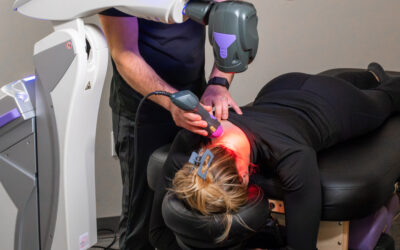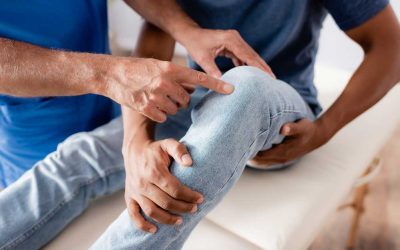It’s time to thaw out some of the misconceptions around icing and injury. In this blog post we’re answering the age-old question: Should you ice or heat your injury? The answer just might surprise you!
But before we get to that, I need to state that the following information is for educational and entertainment purposes only. If you’ve sustained an acute injury, stop Googling and GO see your doctor. Injuries are stubborn, and the longer it takes to address them, the longer it may take to recover. I’m serious, go to your Doctor.
Ok, now that we got that out of the way.
What We’ve Been Told
Let’s quickly take a walk down memory lane…
Do you remember when you were a kid and you or your friend sprained an ankle during P.E. class?
The concerned teacher quickly refers you to the nurse and the nurse wraps up your ankle, throws a bag of ice on it, and tells you to keep it on for 20 minutes.
Additionally, she or he prescribes the acronym that we will remember for the rest of our life.
The nurse wants you to Rest. Ice. Compress. Elevate. The nurse wants you to hit that injury with some R.I.C.E.
So where did this ubiquitous prescription, which sounds good and seems to make sense, come from?

The (R.I.C.E.) Myth… I mean, Method.
On October 1, 1978, Dr. Gabe Mirkin and Marshal Hoffman published, “Sports Medicine Book”.
A guideline for exercise, diet, and injuries, which quickly became a global phenomenon and was adopted as a universal manual for coaches and trainers in treating acute injuries.
Although wildly popular and undisputed for decades, these claims, while well intended, have begun to show up in the literature as, at best, inconclusive and unsubstantiated. Let me explain.
It makes sense.
You sprain your ankle (I’m using a common example here so just go with me) and within minutes or hours, depending on the severity of the sprain, you begin to notice swelling around the affected area. The swelling leads to tightness around the ankle and a reduction in mobility.
So, using logic, we are innately motivated to reverse this process in an effort to restore range of motion and function back to the joint.
This idea is tantamount to suffering a cut and applying pressure to stop the bleeding. Stifle the natural process and expedite the healing, right?
Not so fast!
Now, before I go any future. I would like to direct you to the Sport Journal to reference over 50 studies on this very subject. I will put a link in the description and I highly encourage you to check it out for more vastly detailed information on this subject.

Active Recovery Is the Answer (A.C.I.T.A)
It’s important to remember that your body is not stupid. The natural process that happens when we sustain an injury, ailment, or affliction is the body on the offensive to help ensure your survival.
I don’t mean to tie a correlation between an ankle sprain and mortality; I only mean to depict that your body is trying to help you. Therefore, when we sprain our ankle and notice swelling accumulate, we should rejoice that the body is doing its job and sending a massive amount of blood flow to the impacted site to begin the healing of tissues.
So, to sabotage that process is at a minimum counterproductive and could lead to unintended, negative effects. Again, I refer you to the Sport Journal for more detail.
Ok, now let’s talk about solutions. Have you ever heard the adage “movement is medicine”?
While I believe this saying is accurate in so many ways and it is especially true in accelerating the healing process of an acute musculoskeletal injury.
Now, before I go any further I have to say something — Ice, in intermittent doses, has been shown to reduce pain. Furthermore, if you perceive that the ice is helping you (particularly in the first 48 hours), who am I to suggest otherwise?
That said, it’s crucial to let the blood vessels and lymphatic system do their thing.
For that to happen, it is encouraged to keep moving to create propulsion or mechanically driven flow of new blood supply to the injured area.
In the book, “Iced! The Illusionary Treatment Option”, author Gary Reinl advocated for A.C.I.T.A: Active Recovery is the Answer.
Additionally, in 2015, Dr. Gabe Mirkin reversed the original R.I.C.E. stance and subsequently replaced it with Movement. Elevation.
Traction and Heat.
I’ll let you figure out that acronym for yourself.
Summary
In summary, move baby, move.
Movement is truly medicine and it’s the best way for our body to be allowed to do its job: to help you recover and regain functionality as fast as possible.
If you live in the Seattle or Portland area and are dealing with an ankle sprain or any other musculoskeletal injury that just doesn’t seem to go away, then show your body you care by scheduling an appointment with one of our amazing Doctors right away.
We’ve been one of them (if not the top practice) in Seattle for over a decade because we listen to you, provide an uplifting and positive experience, get you out of pain and give you the tools to live a life free of limitations.
Don’t wait any longer, schedule an appointment today.
Article Reference: https://thesportjournal.org/article/the-r-i-c-e-protocol-is-a-myth-a-review-and-recommendations/


